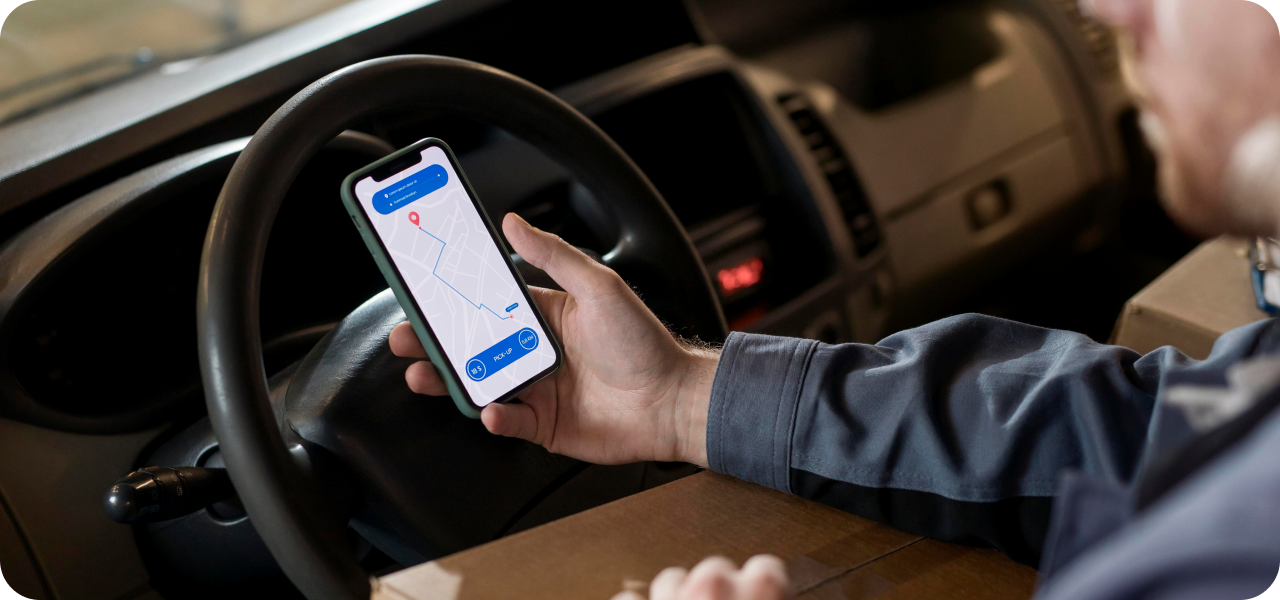10 Ways IoT and Mobile Apps are Revolutionizing Fleet Management

Effective vehicle safety and operational efficiency are essential pillars in modern commercial fleet management. As fleets grow in size and complexity, combining the power of Internet of Things (IoT) with mobile technology creates a seamless and advanced solution for fleet operators. This integration helps maintain optimal performance, reduce costs, and ensure the safety of both drivers and vehicles.
In this blog, we explore the central role of IoT-driven hardware and mobile software in transforming fleet management and diagnostics with a holistic approach to vehicle safety.
Key IoT & Mobile-Driven Solutions for Fleet Management
1. Tire Temperature and Pressure Monitoring (TPMS)
IoT-powered real-time tire monitoring, paired with mobile alerts, plays a critical role in vehicle safety and efficiency. By detecting changes in tire temperature and pressure, it helps prevent issues before they escalate. TPMS provides constant feedback which allows fleet managers to steer clear of tire problems, reduce wear and keep vehicles running smoothly.
Benefit: Early detection of tire issues prevents costly breakdowns and accidents, saving on repair costs and ensuring legal compliance with vehicle safety regulations.
2. Anti-Fuel Theft Systems
Fuel theft is a common challenge for fleet operators and it always leads to unnecessary additional costs. IoT-enabled anti-fuel theft systems detect unauthorized siphoning and fuel loss by providing immediate mobile alerts.
Benefit: Preventing fuel theft directly impacts a fleet’s operational efficiency and reduces fuel-related expenses leading to more predictable budgeting.
3. Overload Detection
Overloading can severely damage commercial vehicles and lead to unsafe driving conditions. With IoT-based overload detection systems, fleet managers can monitor load distribution in real-time, set thresholds and receive instant mobile alerts when limits are breached.
Benefit: This not only ensures vehicle safety and compliance with legal weight limits but also helps optimize fuel usage and vehicle lifespan.
4. Real-Time Route Mapping and GPS Tracking
IoT-powered route mapping solutions enable fleet operators to define specific waypoints, stops along with final destinations for their vehicles. Integrated GPS/GNSS systems and mobile apps provide real-time tracking so that vehicles can stay on course.
Benefit: These systems help fleets optimize routes for efficiency and cost savings while providing transparency in fleet operations.
5. Detour Detection and Geofencing
IoT-enabled geofencing creates virtual geographic boundaries around a vehicle’s expected route. Any deviation triggers route alerts supported by anomaly detection algorithms that identify irregular vehicle movements. This means there are more chances of vehicles staying on their planned path, with historical data available for analysis.
Benefit: Enhanced security and monitoring help prevent vehicle misuse and ensure deliveries and trips stay on track. Result? Time and fuel saved!
6. Accident and Fall Detection
IoT-based accident detection systems monitor sudden changes in speed, direction and vehicle orientation to identify potential accidents. This data can be used for compliance, insurance claims, and even driver safety alerts via mobile apps.
Benefit: By responding swiftly to accidents and collecting valuable event data, fleet operators can minimize downtime and liability.
7. Cabin and Surrounding Monitoring
Installing IoT-connected cameras inside and outside the vehicle brings comprehensive surveillance of the vehicle’s environment. High-definition cameras allow for live monitoring and post-incident reviews which ensures both driver and vehicle safety.
Benefit: Increased accountability and better incident documentation contribute to overall fleet security and improved driver behavior.
8. Centralized Control with Command and Control Stations (CCS)
A Command and Control Station (CCS) provides centralized monitoring and rapid response to incidents. By integrating all IoT systems into one platform, fleet managers can keep a tab on their entire fleet.
Benefit: Enhanced incident management, faster response times and seamless documentation can ensure security and operational efficiency.
9. Customer Support Services
IoT systems in commercial vehicles require proactive maintenance to function effectively. Mobile-enabled customer support platforms integrated with the IoT systems offer fleet operators real-time assistance to resolve technical issues quickly while providing insights into system performance.
Benefit: Timely support prevents downtime, builds trust, and fosters long-term customer relationships.
10. Automated Tire Inspection and Maintenance
IoT solutions extend to tire health monitoring with automated tire inspection tools. These systems, connected to mobile apps, can measure wear, predict the end of tire life and even provide alerts for alignment and rotation which help fleet managers optimize tire performance and value.
Benefit: Proactive tire management minimizes the risk of tire failure, reducing downtime and extending the lifespan of the tires.
To Conclude
As IoT continues to reshape the commercial vehicle industry, its benefits extend far beyond just safety. IoT-powered diagnostics provide fleet managers with real-time insights into key vehicle metrics like odometer readings, engine load, RPM, and driving behavior, helping them detect issues early, ensure compliance with maintenance schedules, and improve overall vehicle health.
By integrating IoT and mobile technologies, fleet operators can enhance safety, optimize performance, and streamline their operations.
Conclusion
From enhancing scalability to staying ahead of technological trends, software consulting can be the catalyst that drives a business forward. With expert guidance, companies can better navigate the complexities of software development.

